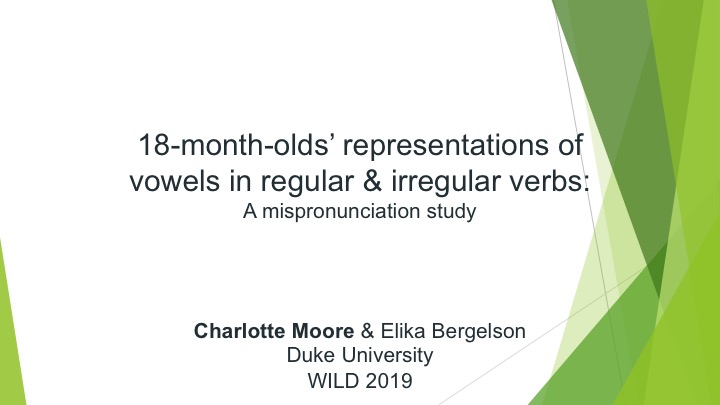18-month-olds’ representations of vowels in
regular & irregular verbs:
A mispronunciation study
Moore & Bergelson (2019)
Presented at WILD 2019 in Potsdam, Germany
Abstract
Around 12 months, infants have well-specified phonetic representations of familiar nouns. They detect consonant and vowel mispronunciations during comprehension (Swingley & Aslin 2000; Mani & Plunkett 2007, 2008; Bergelson & Swingley, 2017); sensitivity by 18 months is even more robust (Swingley & Aslin 2000; White & Morgan, 2008). However, we know little about early phonetic representations of verbs. Verbs are cross-linguistically later-learned than concrete nouns (Gentner, 1982). Indeed, 3-year-olds still struggle with novel verbs in the lab; tense-marking acquisition extends into middle childhood (Maguire, Hirsh-Pasek, & Golinkoff, 2005; Herriot, 1969). Still, infants begin producing verbs around 18 months. How robust are early phonological representations of verbs, and does verb regularity play a role?
